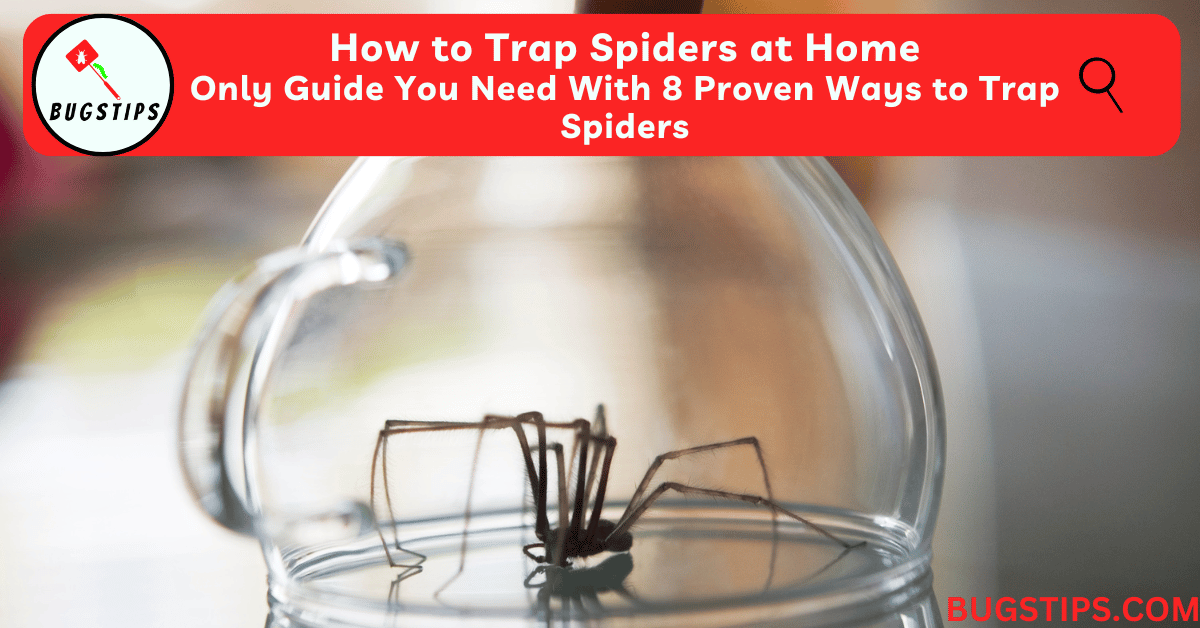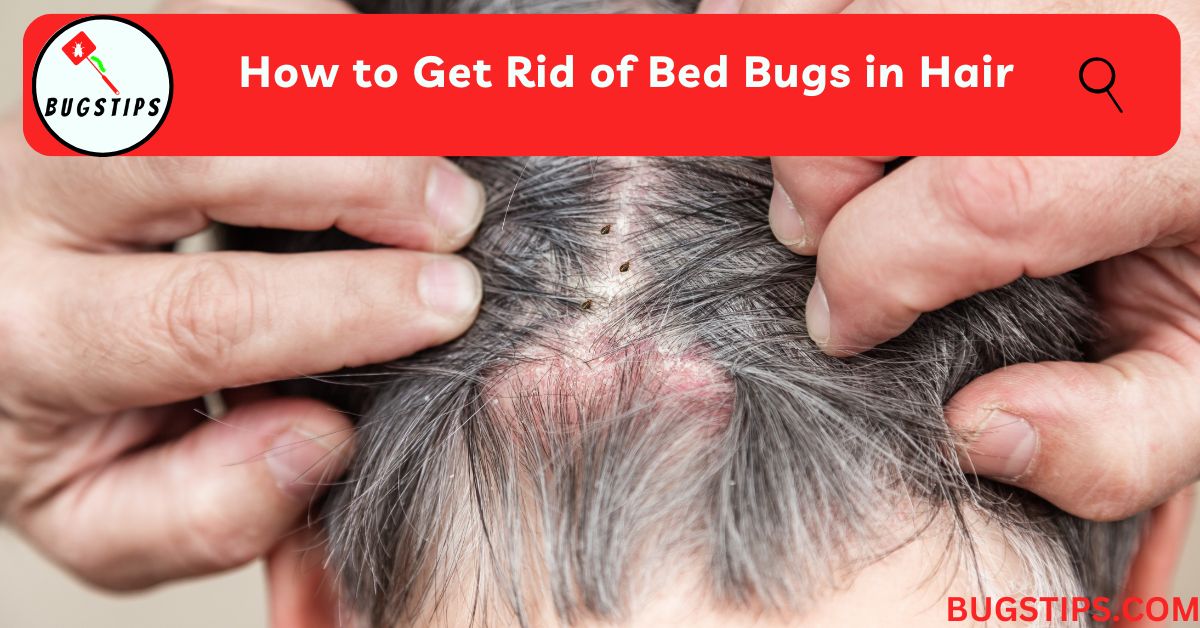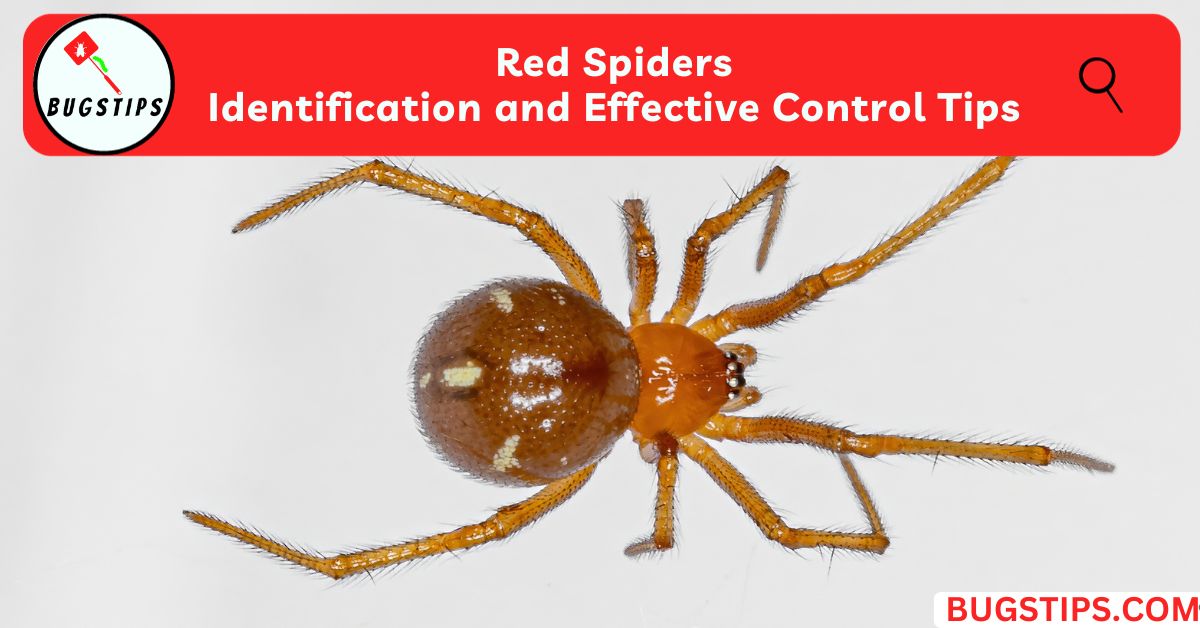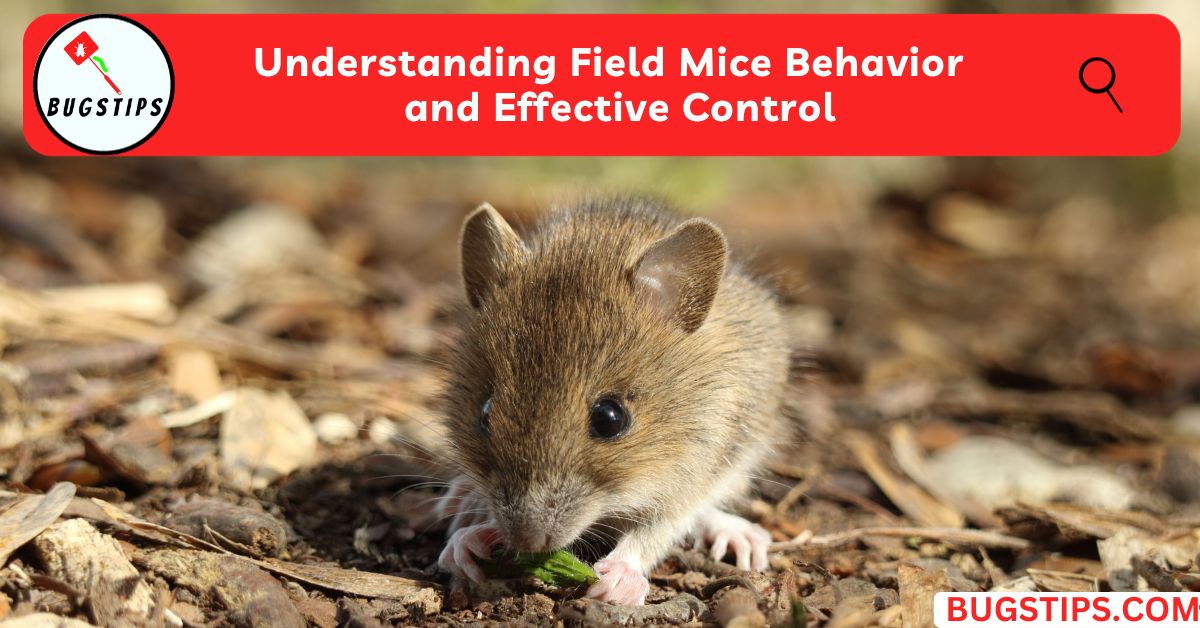This post may contain affiliate links which means as an Amazon Associate, this site may earn a small commission on qualified purchases made through links at no extra cost to you. Learn more on Affiliate Disclosure
Spiders are among the most common household pests, and they can be a real nuisance to deal with. Not only are they creepy and crawly, but some species can also be dangerous to humans. That’s why it’s essential to know how to trap spiders and keep them out of your home.
In this guide, we’ll cover everything you need to know about trapping spiders, including the tools and techniques you can use to keep your home spider-free. Whether you’re dealing with a small spider problem or a full-blown infestation, we’ve got you covered.
So, if you’re ready to take control of your spider problem, read on to learn how to trap spiders like a pro!
Why Trapping Spiders Is Important
Spiders are often viewed as creepy and potentially dangerous pests, which is why many people feel the need to trap them. But beyond just being unsettling to look at, spiders can actually pose a threat to our health and wellbeing.
Here are some reasons why trapping spiders is important:
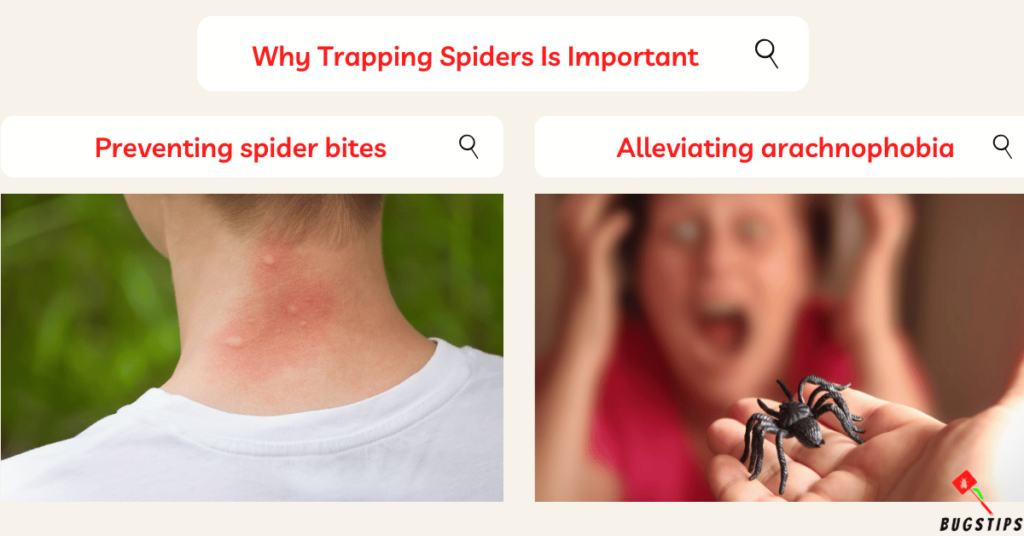
Preventing spider bites
Trapping spiders can be an effective way to prevent spider bites. While most spiders are not venomous or dangerous to humans, there are some species that can cause painful or even life-threatening bites.
By trapping spiders, you can reduce the risk of accidentally coming into contact with a venomous spider and getting bitten.
Spider bites can cause a range of symptoms, depending on the type of spider and the severity of the bite. Common symptoms include pain, redness, swelling, itching, and in some cases, nausea, vomiting, and difficulty breathing.
In rare cases, spider bites can lead to serious medical complications, such as anaphylactic shock or necrotic tissue damage.
By trapping spiders, you can reduce the likelihood of encountering a venomous spider and getting bitten. This is especially important if you live in an area with a high concentration of venomous spiders, such as the brown recluse or black widow.
And trapping spiders can help also reduce the risk of spider bites in young children and pets, who may be more vulnerable to spider bites and less aware of the potential dangers.
Creating a safer and more comfortable living environment for all can be achieved by proactively managing spider populations in and around your home. Taking necessary measures to control spiders can help prevent potential hazards and ensure a pleasant living experience.
Keeping your home clean and comfortable
In addition to preventing spider bites, trapping spiders can also help keep your home clean and comfortable. Spiders can quickly create webs and nests around your home, which can be unsightly and difficult to clean up.
By trapping spiders, you can remove these webs and nests, as well as the spider droppings and debris that often accompany them.
This can help create a more pleasant and inviting living environment, free of unwanted pests and clutter.
It can also help prevent other pests, such as flies and mosquitoes, from being attracted to your home, as spiders are known to be a food source for many insect species.
By taking proactive steps to manage spider populations in and around your home, you can help maintain a clean and comfortable living space for you and your family.
This can be especially important if you have young children or pets, who may be more sensitive to the presence of spiders and other pests.
Trapping spiders can help promote a safer, cleaner, and more comfortable living environment, free of unwanted pests and clutter.
By using the right tools and techniques to trap spiders, you can effectively manage spider populations and maintain a clean and inviting home.
Alleviating arachnophobia
Trapping spiders can also help alleviate arachnophobia, which is the fear of spiders. Arachnophobia is a common phobia, affecting millions of people worldwide.
It can cause significant anxiety, stress, and discomfort, particularly for those who live in areas with a high concentration of spiders.
By taking proactive steps to manage spider populations in and around your home, you can help reduce the likelihood of encountering spiders and potentially triggering feelings of fear or anxiety.
This can be achieved through the use of spider traps, as well as other preventative measures such as sealing up cracks and crevices in your home and keeping your living space clean and clutter-free.
For those who suffer from arachnophobia, the presence of spiders can be a significant source of stress and discomfort.
By trapping spiders and reducing their populations, you can create a more relaxed and comfortable living environment, free of unwanted pests and anxiety triggers.
Moreover, trapping spiders can be an effective way to confront and overcome your fear of spiders. By taking control of the situation and actively managing spider populations, you can feel more confident and empowered in dealing with your phobia.
Overall, trapping spiders can be an important tool for those looking to alleviate arachnophobia and create a more relaxed and comfortable living environment. By using the right tools and techniques to manage spider populations, you can effectively reduce the likelihood of encountering spiders and potentially triggering feelings of fear or anxiety.
Related Article – How to Get Rid of Spiders Under Eaves
Tools and Techniques for Trapping Spiders
Before we dive into the details of how to trap spiders, it’s important to understand the different tools and techniques available for trapping these pesky insects.
There are several types of traps available, each with its own unique features and benefits.
One of the most common types of spider traps is the sticky trap. These traps are coated with a sticky adhesive that spiders become trapped in when they walk over the surface. Sticky traps are typically placed in areas where spiders are known to frequent, such as along walls or in corners of rooms.
Another type of spider trap is the glue board. Similar to sticky traps, glue boards are coated with a sticky adhesive that captures spiders and other insects. Glue boards are often placed in areas where spiders are known to hide or where other insects are present, such as in basements or attics.
Catch and release traps are another option for trapping spiders. These traps work by allowing the spider to enter the trap and then trapping them inside without harming them. Once trapped, the spider can be safely released outside of your home.
When using spider traps, it’s important to take appropriate safety precautions. This includes wearing gloves and other protective gear when handling traps, as well as disposing of traps safely and responsibly.
It’s also important to follow the manufacturer’s instructions when using traps to ensure they are used effectively and safely.
So the different types of traps available for trapping spiders provide a range of options for homeowners looking to manage spider populations in and around your homes.
By understanding the different types of traps available and taking appropriate safety precautions when handling them, you can effectively manage spider populations and create a more comfortable and pest-free living environment.
Homemade Traps
If you’re looking for a more cost-effective and eco-friendly approach to trapping spiders, homemade traps may be the solution you need. With common household items like jars, cups, and cardboard, you can create effective spider traps in just a few simple steps.
Jar trap
To create a jar trap, start by finding a glass jar with a lid. Cut a small hole in the lid and place a piece of bait, such as a small piece of bread or a few drops of honey, inside the jar.
Next, fill the jar about one-third of the way with water and place it in a spider-infested area. Spiders will be attracted to the bait, climb into the jar, and drown in the water.
Cup trap
Another homemade trap option is a cup trap. Begin by placing a piece of tape, sticky side up, at the bottom of a cup. Then, place a piece of bait on the tape, such as a small piece of fruit or a cracker.
Once the spider climbs onto the tape to reach the bait, it will become stuck and unable to escape.
Cardboard traps
Cardboard traps are another simple homemade option. Take a flat piece of cardboard and spread a thin layer of petroleum jelly on it.
Place the cardboard in areas where spiders are present, such as corners or near windowsills. The spiders will become stuck in the jelly and unable to move.
While homemade traps can be effective, they do have some drawbacks. These traps may not be as potent as commercial traps, and they may require more frequent replacements.
Additionally, homemade traps may not be as safe to handle as commercial traps, so it’s essential to use gloves and other safety precautions when handling them.
Overall, homemade traps can be an excellent option for those on a budget or looking for a more natural approach to spider control. With just a few household items and a little creativity, you can create effective spider traps and try to catch spiders using those traps.
You’ll Also Like – Can a Spider Die from Falling?
Best Spider Traps for Indoors
TERRO T3206SR Spider & Insect Trap
This trap uses a sticky surface to catch spiders and other insects. It features a discreet design and can be placed in any room of your home. The TERRO T3206SR Spider & Insect Trap is also non-toxic and safe to use around children and pets.
Features and Benefits:
- Discreet design
- Non-toxic and safe to use around children and pets
- Effective at catching spiders and other insects
Drawbacks and Potential Issues:
- Some users have reported that the traps may dry out quickly in low-humidity environments
Trapper Insect Trap
The Trapper Insect Trap uses a strong adhesive to capture spiders and other pests. It has a low profile design that allows it to fit into tight spaces, such as under furniture or in closets. This trap is also non-toxic and safe for use around people and pets.
Features and Benefits:
- Low profile design
- Non-toxic and safe for use around people and pets
- Strong adhesive for effective trapping
Drawbacks and Potential Issues:
- Some users have reported that the adhesive may lose effectiveness over time and require frequent replacement
Catchmaster 72MAX Pest Trap
The Catchmaster 72MAX Pest Trap uses a sticky surface to trap spiders, ants, and other pests. It has a foldable design that allows it to be placed in a variety of locations, and it can be easily disposed of once it has caught its target. This trap is also non-toxic and safe for use around people and pets.
Features and Benefits:
- Foldable design for versatile placement
- Non-toxic and safe for use around people and pets
- Effective at trapping spiders, ants, and other pests
Drawbacks and Potential Issues:
- Some users have reported that the traps may not be as effective at catching larger spiders
Here’s a table summarizing the information:
Sure, here’s the updated table:
| Trap Name | Features and Benefits | Drawbacks and Potential Issues |
|---|---|---|
| TERRO T3206SR Spider Trap | – Discreet design – Non-toxic and safe for use around children and pets – Effective | – May dry out quickly in low humidity environments |
| Trapper Insect Trap | – Low profile design – Non-toxic and safe for use around people and pets – Strong | – Adhesive may lose effectiveness over time and require frequent replacement |
| Catchmaster 72MAX Pest Trap | – Foldable design for versatile placement – Non-toxic and safe for use around people and pets – Effective | – May not be as effective at catching larger spiders |
Remember to consider the specific needs of your home and the types of spiders present before purchasing any spider trap. Also, follow all safety precautions when handling and disposing of spider traps, including wearing gloves and washing your hands thoroughly after use.
How to Trap Spiders
After you have gathered all the necessary tools and traps, you can try to trap spiders. First, identify the areas where spiders are most commonly found in your home. This could be corners, walls, or ceilings.
Once you have identified the area, place the trap in a strategic location. For example, if you are using a sticky trap, place it in the pathway where spiders are most likely to travel. If you are using a jar or cup, place it upside down over the spider.
How to Attract Spiders to a Sticky Trap?
Attracting spiders to a sticky trap is relatively simple.
Spiders are attracted to areas where insects are abundant, so placing the trap in a location where other insects are present is key. Common areas to place a sticky trap include near windows, doors, and in the corners of rooms.
Another effective way to attract spiders to a sticky trap is by using a pheromone-based attractant. These attractants mimic the natural scent of prey and can lure spiders to the trap. Pheromone-based attractants are available for purchase at most home and garden stores.
It's important to note that not all spider species are attracted to the same types of prey, so it's important to use a sticky trap that targets the specific type of spider you're trying to catch.
For example, some traps are designed to attract and trap house spiders, while others are more effective for brown recluse spiders.
In general, it’s best to place sticky traps in areas where spiders are likely to crawl, such as along baseboards and in corners. Be sure to avoid placing traps in areas where pets or children may come into contact with them.
By using the right attractant and placing the trap in the right location, you can increase your chances of catching spiders with a sticky trap.
However, it’s important to note that trapping spiders is not always 100% effective and may need to be combined with other pest control measures to fully eliminate a spider infestation.
If you are using a catch and release trap, take the spider outside and release it. If you are using a sticky trap or glue board, dispose of it properly according to the manufacturer’s instructions.
Remember to always practice safety precautions when handling traps and spiders.
How to Catch a Spider on the Ceiling
Catching a spider on the ceiling can be a bit challenging, but it’s not impossible.
The first thing you’ll need is a long-handled tool, such as a broom or a duster, to reach the spider. It’s important to approach the spider slowly and cautiously, so as not to startle it.
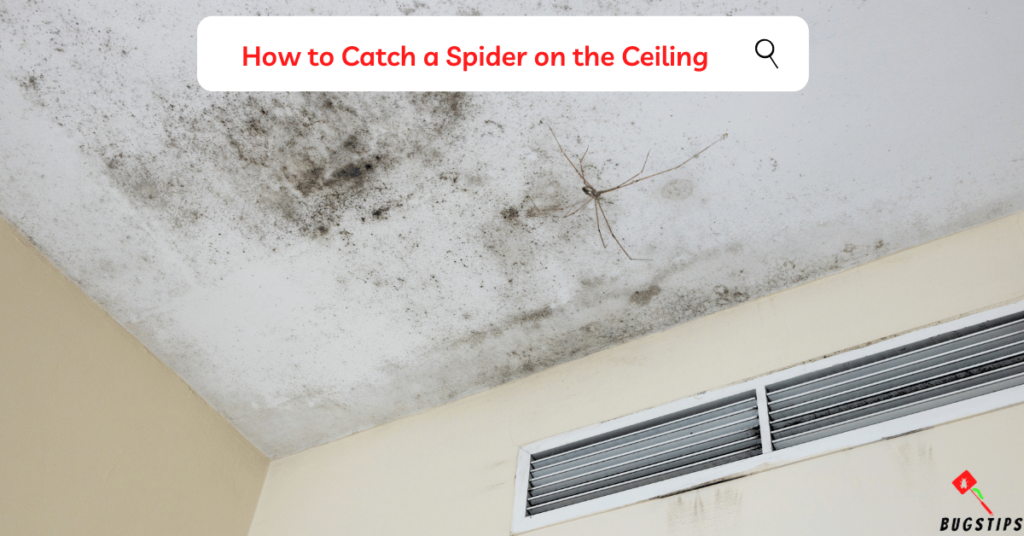
Once you are within range, gently place the bristles of the broom or duster against the ceiling, right next to the spider. Slowly move the tool towards the spider until it’s in range for you to trap it.
You can then use a container or a piece of paper to trap the spider. Hold the container or paper underneath the spider, then use the broom or duster to gently nudge the spider towards the container or paper.
Related Article – How to Get Rid of Spiders Under Eaves
Once the spider is inside, you can cover the container or paper and take it outside to release the spider.
It's important to remember to wear gloves or use a tool when handling the container or paper to avoid getting bitten. Also, make sure to release the spider at least a few feet away from your home to prevent it from finding its way back inside
How to Catch a Spider on a Wall
Catching a spider on a wall can be a bit tricky, but with the right technique, it can be done safely and effectively.
Here’s how to do it:
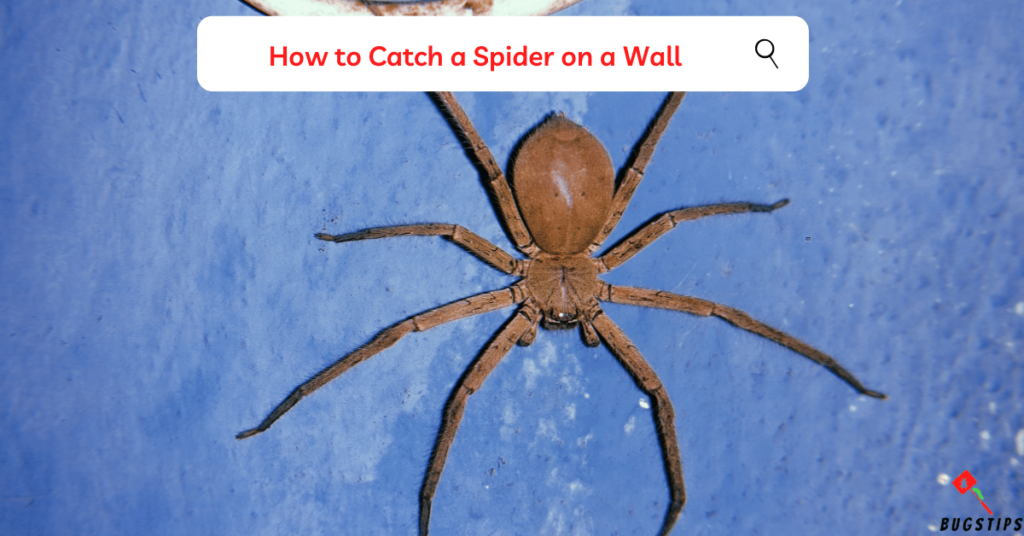
First, put on a pair of gloves to protect your hands from any potential bites or stings. It’s always better to be safe than sorry!
Next, grab a cup or jar and a piece of paper or cardboard. You’ll use these to trap the spider and safely release it outside.
Slowly approach the spider on the wall, being careful not to startle it or make sudden movements. It’s best to approach from the side rather than head-on, as this can make the spider feel threatened.
Hold the cup or jar over the spider, with the opening facing down. Place the piece of paper or cardboard against the wall, flush with the cup or jar.
Gently slide the paper or cardboard behind the spider, coaxing it into the cup or jar. Once the spider is inside, carefully lift the cup or jar away from the wall, making sure to keep the opening facing down.
Take the cup or jar outside and release the spider safely into a garden or other natural area. Be sure to place the cup or jar down gently and remove the paper or cardboard, allowing the spider to crawl out on its own.
Remember, when catching spiders or any other insects, it's important to handle them gently and with respect. By following these steps, you can safely remove spiders from your home without harming them or putting yourself at risk.
How to Catch a Spider in a Corner
When it comes to catching a spider in a corner, there are a few different techniques that can be effective.
Here are some tips:
Use a container: Grab a plastic container or a glass and place it over the spider, making sure to cover it completely. Then, carefully slide a piece of paper or cardboard under the container to trap the spider inside. This method allows you to safely release the spider outside.
Vacuum it up: Use a vacuum cleaner with a hose attachment to suck up the spider. This is a quick and easy way to catch spiders in hard-to-reach corners. Just be sure to empty the vacuum afterwards.
Use a spider catcher: A spider catcher is a tool that allows you to catch and release spiders without getting too close to them. It usually consists of a long handle with a small trap at the end. Simply place the trap over the spider and then release it outside.
Trap it with tape: You can also try using a piece of masking tape or duct tape to catch the spider. Gently place the tape over the spider and then carefully peel it off and release it outside.
As mentioned above always remember to wear gloves and take precautions when handling spiders to avoid getting bitten. And always release the spider outside, away from your home.
Professional Solutions
If you’re dealing with a severe spider infestation, homemade traps may not be enough. In such cases, it’s best to seek professional help.
These typically involve hiring a pest control company or exterminator to come to your home and assess the situation. They will then recommend and apply appropriate spider control treatments.
Here are some effective professional solutions to consider:
Insecticides: Professional pest control companies use a variety of insecticides to get rid of spiders. These chemicals are designed to kill spiders and prevent them from returning.
Ultrasonic repellers: Ultrasonic repellers emit high-frequency sound waves that repel spiders and other insects. They are safe, non-toxic, and can cover a large area.
Glue boards: Glue boards are adhesive traps that catch spiders and other crawling insects. They can be placed in areas where spiders are likely to hide, such as under furniture and in dark corners.
Professional solutions can be effective, especially for severe infestations or if you are dealing with venomous spider species. However, they can also be expensive and may involve the use of pesticides, which can be harmful to pets and children if not applied properly.
It’s important to do your research and choose a reputable pest control company that uses safe and eco-friendly methods. Ask for recommendations from friends and family, read online reviews, and make sure the company is licensed and insured.
Keep in mind that professional solutions should be used as a last resort after trying other methods such as traps and DIY solutions. Additionally, preventive measures such as sealing cracks and crevices and keeping your home clean can help prevent future spider infestations.
Final Thoughts
Learning how to trap spiders can help keep your home spider-free without relying on harmful pesticides. Homemade traps using common household items like jars, cups, and cardboard can be effective, but may require some trial and error.
Meanwhile, commercial spider traps offer convenience and effectiveness, but may have some drawbacks to consider before purchasing.
Professional extermination services are also available for those with severe spider infestations. Ultimately, the best approach will depend on your personal preferences and the severity of the infestation. Whatever method you choose, remember to prioritize safety and always follow instructions carefully.
FAQs
How can I prevent spiders from entering my home in the first place?
The best way to prevent spiders from entering your home is to seal up any cracks or gaps in your walls, windows, and doors. You can also keep your home clean and clutter-free, as spiders are attracted to dark, dusty areas.
What should I do if I find a venomous spider in my home?
If you find a venomous spider in your home, it’s best to call in a professional to handle the situation. Venomous spiders can be dangerous, and attempting to trap them on your own can be risky.
What is a good trap to set to catch spiders?
A good trap to catch spiders is a sticky trap or glue board. These traps are effective, easy to use, and readily available in hardware stores or online.
Do sticky traps catch brown recluse spiders?
Sticky traps can catch brown recluse spiders, but they are not always effective since these spiders tend to move along walls and other objects instead of walking across open floors. It’s important to keep in mind that sticky traps are just one tool in spider control and should be used in conjunction with other methods.
Can I release trapped spiders back into the wild?
Yes, you can release trapped spiders back into the wild. Simply take them outside and release them in a safe area away from your home.
Do ultrasonic repellers work?
Ultrasonic repellers have not been proven to be effective in repelling spiders.

